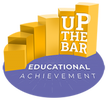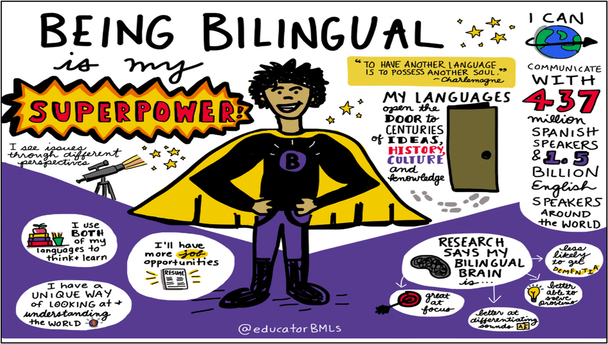What is Teaching for Biliteracy?
Teaching for biliteracy focuses on the strategic and thoughtful ‘bridging’ between the Spanish and English languages. It is based on the premise that the native Spanish language deserves to be nurtured and fortified before language learners can effectively ‘bridge’ into English. Once they are ready, these learners engage in a metalinguistic contrastive analysis wherein they learn to appreciate the similarities and differences between their two languages. Teaching for biliteracy solidifies a Spanish foundation in order to more successfully build English language acquisition.
Teaching for Biliteracy Learning Opportunities
Teacher Institute
Designed to establish a learning community through sustained and consistent engagement throughout the year, building trust and laying the groundwork in areas that are critical to the success of all students. Three full-day classes for cohorts, tailored to thoroughly investigate how to strategically and thoughtfully plan for instruction so that all students have equitable access to content while developing all of their language skills. Emphasis is placed on implementation as homework will be assigned, and email communication will be encouraged between classes to maintain momentum and accountability.
Administrator Access
Administrators will learn the ‘Look Fors’ when observing students who are actively engaged in their learning due to the conscientious implementation of highly effective strategies by their inspired teachers. During a full day of training, administrators will adjust their collective lens as they gain clearer insight into how a classroom infused with Teaching for Biliteracy strategies will operate, so that they may provide support and validation to teachers as they Up the Bar on the quality of education all of their students deserve.
Guided Coaching
The goal is to provide the teachers with the in-class support and on-the-job learning required to implement the training they have received to a high degree of fidelity. This is the follow-through that is critical to the success of professional development. It is a commitment to work closely with teachers to guide them on their journey to create truly inclusive learning environments. Interaction may include modeling, co-teaching, observations, and real-time feedback on strategic implementation in the classrooms. Occasionally, administrators may be invited to join so that they may sharpen the collective lens through which teachers are observed and expectations are aligned.
Designed to establish a learning community through sustained and consistent engagement throughout the year, building trust and laying the groundwork in areas that are critical to the success of all students. Three full-day classes for cohorts, tailored to thoroughly investigate how to strategically and thoughtfully plan for instruction so that all students have equitable access to content while developing all of their language skills. Emphasis is placed on implementation as homework will be assigned, and email communication will be encouraged between classes to maintain momentum and accountability.
Administrator Access
Administrators will learn the ‘Look Fors’ when observing students who are actively engaged in their learning due to the conscientious implementation of highly effective strategies by their inspired teachers. During a full day of training, administrators will adjust their collective lens as they gain clearer insight into how a classroom infused with Teaching for Biliteracy strategies will operate, so that they may provide support and validation to teachers as they Up the Bar on the quality of education all of their students deserve.
Guided Coaching
The goal is to provide the teachers with the in-class support and on-the-job learning required to implement the training they have received to a high degree of fidelity. This is the follow-through that is critical to the success of professional development. It is a commitment to work closely with teachers to guide them on their journey to create truly inclusive learning environments. Interaction may include modeling, co-teaching, observations, and real-time feedback on strategic implementation in the classrooms. Occasionally, administrators may be invited to join so that they may sharpen the collective lens through which teachers are observed and expectations are aligned.

